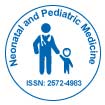当社グループは 3,000 以上の世界的なカンファレンスシリーズ 米国、ヨーロッパ、世界中で毎年イベントが開催されます。 1,000 のより科学的な学会からの支援を受けたアジア および 700 以上の オープン アクセスを発行ジャーナルには 50,000 人以上の著名人が掲載されており、科学者が編集委員として名高い
。オープンアクセスジャーナルはより多くの読者と引用を獲得
700 ジャーナル と 15,000,000 人の読者 各ジャーナルは 25,000 人以上の読者を獲得
インデックス付き
- Google スカラー
- レフシーク
- ハムダード大学
- エブスコ アリゾナ州
- ICMJE
役立つリンク
オープンアクセスジャーナル
このページをシェアする
抽象的な
Metabolomic Research to Identify Intermediate Infants that Might Need a Diagnostic Tool
Ajeet Kumar
Finding metabolic markers connected to healthy and disease states using urine metabolomics is gaining popularity. The study comprised 31 late preterm (LP) neonates who were admitted to the neonatal intensive care unit (NICU) and 23 healthy LPs who were age-matched and admitted to the maternity ward of a tertiary hospital. On the first and third days of the neonates’ lives, urine metabolomic analysis using proton nuclear magnetic resonance (1H NMR) spectroscopy was conducted. Both univariate and multivariate statistical analysis were used to examine the data. The NICU-admitted LPs were found to have a distinct metabolic pattern of increased metabolites on their first day of life. When LPs with respiratory distress syndrome (RDS) presented, their metabolic profiles were distinctive. The inconsistencies most likely reflect abnormalities in the gut microbiota, which may be brought on by dietary changes or medical procedures like the administration of antibiotics and other drugs. For seriously unwell LP neonates or those who are at a high risk for negative outcomes later in life, including metabolic concerns, altered metabolites may be used as biomarkers. The identification of novel biomarkers may provide a personalized strategy by revealing prospective drug discovery targets and the best window of opportunity for intervention.

 English
English  Spanish
Spanish  Chinese
Chinese  Russian
Russian  German
German  French
French  Portuguese
Portuguese  Hindi
Hindi